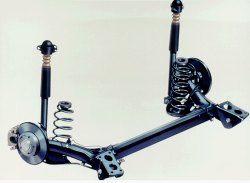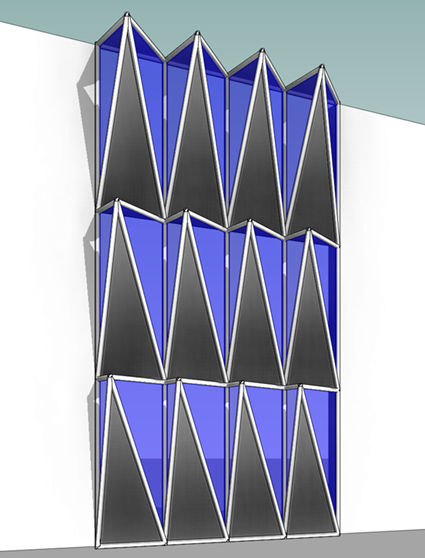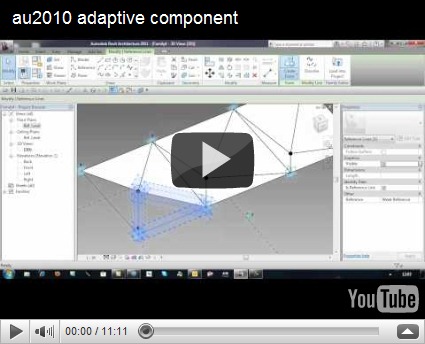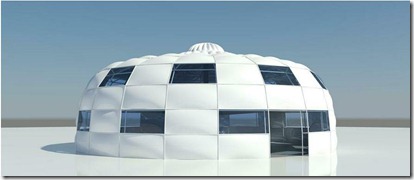Alpavirama 2011: NID film festival and conference
Prof M P RanjanAlpavirama 2011 is an event that includes a short film competition, a retrospective of select NID films and a seminar on film making and the design space, all conducted under the banner of NID in its 50th year of existence. Prof Arun Gupta a film maker and teacher at NID who coordinates the cinema short film conference and festival at NID asked me to comment on the forthcoming event on my blog so I raise the question – is film making Art or Design? To answer that question you may need to attend the conference and see the offerings from students and professionals who have managed to get their short films included in this forthcoming event at NID, Ahmedabad.

Image: Stills from “Chaattalmazha” by Ahsam K R, one of the short films that has been shortlisted for screening at Alpavirama 2011 festival and seminar.
I have however retired from NID services at the end of last month and will move on to a new role of active engagement with design that matters in India and elsewhere. I have been contemplating a change in my blog posts that can be unfettered by official institutional strictures or censorship and over the past few months I have been travelling from country to country and in these journeys I was fortunate to meet some remarkable design thinkers and activists who could be the subject of some future posts in the new year ahead, a renewed Design for India platform that has now seen over 1,00,000 visitors clocking over 2,50,000 page views from 8000+ cities in its first avatar that started in June 2007. I have been invited to speak at a number of international events in Davos, Milan, Shanghai and Atlanta in the coming year and at events in Delhi, Jaipur and Ahmedabad, all exciting and I do look forward to being "retired by NID and from NID" as a Design Thinker and an Independent Academic at large living and working out of Ahmedabad. I had a wonderful farewell party at NID last month and a huge flow of messages on Facebook wishing me well in my retired life, thank you all. Wish you all a very happy and eventful new year ahead.


Image: Stills from the farewell event at NID and the retirement poster from former and current students at NID.
Prof Arun Gupta has sent me a detailed mail outlining the festival at NID and the related events that form part of Alpapavirama 2011 from 18 to 20 February 2011. More information will be available at these links below:
Alpavirama 2011 - South Asian Short & Documantary Film FestivalAlpavirama on FacebookA little bird tells me that some of our well established graduates from the film, TV and advertising industry such as Sonal Dabral, Anirudh Sen and Shetal Sudhir will be sharing their work in person besides many luminaries from Asia and the world.
Prof. Arun Gupta's mail with the details are quoted below:
I Quote:
Introduction
In celebrations of cinema short films are generally overlooked, compared to the conventional full length feature films. There is something intrinsically special about short films. Short films are like life itself, with myriad colours and nuances, each transient yet for ever. There are many quirky, intimate, unfinished aspects of human existence which can best be conveyed only in a short film format. Further, since this kind of filmmaking faces less commercial pressures (cheaper to produce, hence financial gain not the only consideration), it is more likely to explore cinematic form and frontlines, allowing marginal and non-mainstream stories to be told.
People involved in making short films mostly just stop there; and lot of films thus never reach the audience, their authors neither having the will nor the wherewithal to proceed further. The available exhibition avenues haven’t also caught up with the noticeable increase in the number of short films being made. Further, most such spaces are dominated by older established filmmakers, leaving no platform for the large number of under-30 talents. There is need for a venue and an occasion where these young, enthusiastic and often innovative filmmakers are recognized and celebrated.
At the Film & Video Communication department in the National Institute of Design, Ahmedabad we have been promoting short filmmaking for over two decades now. Through these years our students and faculty have created numerous short fiction and documentary films, and the artistic quality and social relevance of these films have been recognized the world over. Our alumni occupy important creative positions in the moving image industry, in India and abroad. Thus its time (in the Golden Jubilee year of NID) the Film & Video Communication department of the National Institute of Design plays a more active role in establishing a credible exhibition platform for short films – especially those given life by the under-30.
The 21st century is commonly believed to belong to Asia. Within Asia, South Asia plays a very important role. It is at once a point of arrival and departure, a seamless link between the so-called orient and the occident. But the subcontinent’s enormous (and increasingly demonstrated) potential has been needlessly inhibited by fratricidal dissension & strife. South Asian short films are alive to these dilemmas, the filmmakers subtly foregrounding the frustrations, pain and promise of south asian life, in their cine tales, underscoring the basic desire of all human beings for peace and harmony.
COMPETITION -
For the Alpavirama 2011 competition section short fiction and documentary films, not-less-than 3 minutes and not-more-than 30 minutes long, will be eligible to participate. The film(s) should have been produced after 1st January, 2009 and should have been directed by a young person (under 30 years, as on 1st January, 2011), who is a citizen of and ordinarily resident in any of the SAARC countries (Bangladesh, Bhutan, India, Maldives, Nepal, Pakistan and Sri Lanka). The subject matter of the film should also broadly deal with South Asia, its people and their lives.
Each film selected for the competition will be screened at least once during the festival. The competition Jury would comprise of eminent individuals selected from the fields of cinema, arts, culture and academics, from India/South Asia.
Awards (Golden Commas) will carry a cash component as well as a trophy. All films selected for competition will get a Certificate of Participation.
RETROSPECTIVE -
For over twenty years, the students of the department of Film & Video Communication at the National Institute of Design, Ahmedabad have been making short fiction and documentary films, as part of their regular course structure. Many of these films won national and international recognition in the years they were made, but have subsequently not been seen or heard about. Hence a representative retrospective package of NID Film & Video student films, produced in the last two decades, will be curated and presented in the festival. Alumni whose works feature in the retrospective will be encouraged to be present during the festival, to lead the pre and post-screening dialogue.
SPECIAL PACKAGE -
The fast pace of China’s growth in recent years have left several old international hegemonies panting behind. Hong Kong, as China’s emblematic entranceway, is a city undergoing intricate and provocative change, with its medley of communism and capitalism, vertical and horizontal, expatriate and local, Cantonese and Mandarin. It would thus be very interesting to find out how the young Hong Kong filmmakers, living amidst these complex shifts, record & interpret life around them.
At Alpavirama 2011 there will be a Special Package of selected contemporary documentary and short fiction films from Hong Kong. Efforts would be made to invite some of the young filmmakers from Hong Kong, whose works feature in the package.
SEMINAR (Creative Seconds? - Ads, Promos and PSAs)
Many established filmmakers started their careers making under-a-minute films. This is where they polished their craft and learnt the ropes of the business. Some moved on, to longer duration formats. Some occasionally returned, for quick money or to revisit the aesthetic and communication challenges of the very short film.
NID Film & Video alumni have consistently made a name for themselves in the world of advertising films and television channel promotionals. It’s natural therefore for Alpavirama 2011 to ask the question – are these under-a-minute ads, promos and psa’s as imaginative an activity as a longer duration film – and what are the specific features which make these seconds so special ?
Alpavirama 2011 will have a half-day seminar on this topic, with experts presenting their views and subsequently taking part in a group interface with the audience.
Selected Films for Alpavirama 2011 COMPETITION
(1) Avargalluka / Dir: Alfred Prakash (Tamil-LV Prasad Chennai-India)
(2) Bedtime Story / Dir: Sandhya Daisy Sundaram (English-FTII Pune-India)
(3) Chal Meri Luna / Dir: Hardik Mehta (Hindi-Gujarat-India) (http://vimeo.com/11262381)
(4) Dhuruva Natchathiram / Dir: Alfred Prakash (Tamil-LV Prasad Chennai-India)
(5) Eidiyaan / Dir: Aman Kaleem & Mohd Irfan Dar (Kashmiri-Jamia Delhi-India)
(6) Innocence, Medium: Water Colour / Dir: Al-Haseeb Nomanee (English-Dhaka-Bangladesh) (http://vimeo.com/11313427)
(7) Jhat Pat Ghich Pich / Dir: Varun Halder (Hindi-Children's Filmmaking Workshop Delhi-India) (http://www.youtube.com/watch?v=aL8vnHAAtHA)
(8) Kal / Dir: S Manjunathan (Tamil-LV Prasad Chennai-India)
(9) Kalu / Dir: Naveed Anjum (Punjabi-NCA Lahore-Pakistan)
(10) Khel Khel Mein / Dir: Radha Kain (Hindi-Children's Filmmaking Workshop Delhi-India)
(11) Kusum / Dir: Shumona Banerjee (Bengali,English-SRFTI Kolkata-India) (http://www.cultureunplugged.com/play/3899/Kusum---The-Flower-Bud)
(12) Mera Ghar / Dir: Abhay Kumar (XIC Mumbai-India)
(13) Not Born Heroes / Dir: Vishesh Mankal (Hindi-Marwah Studio Delhi-India)
(14) Paci / Dir: J D Imaya Varman (Tamil-Vadalur Tamilnadu-India) (http://www.youtube.com/watch?v=v_hwyTXaCGQ)
(15) Poka / Dir: Ishanee Sarkar (Bengali-NID Ahmedabad-India)
(16) Pushpendra Pandey, Extra / Dir: Ankit Mehrotra (Hindi-TV Direction FTII Pune-India) (http://vimeo.com/10058792)
(17) Shyam Raat Seher / Dir: Arunima Sharma (Hindi,English-FTII Pune-India)
(18) Sound of Time / Dir: Pema Tshering (Thimphu-Bhutan)
(19) Samudra Ke Bare Mein / Dir: Malhar Salil (Hindi-NID Ahmedabad-India)
(20) Idhuvam Love Story Dhanga / Dir: G Bharani (Tamil-LV Prasad Chennai-India)
(21) Titli Udi / Dir: Payal Kapadia (Hindi-Sophia Polytechnic Mumbai-India) (http://vimeo.com/9151026)
(22) Trapped / Dir: Swapnil Ashok Kumawat & Prasad Bhardwaja (Hindi-Pune-India)
Documentary
(23) The Boxing Ladies / Dir: Anusha Nandakumar (Hindi-SRFTI Kolkata-India)
(24) Burning Paradise / Dir: Nisar Ahmed (Urdu,Pashto-NCA Lahore-Pakistan)
(25) Cinema Making Peace? / Dir: Nisar Ahmed (Urdu-NCA Lahore-Pakistan)
(26)
I Woke Up One Morning And Found Myself Famous / Dir: Sumit Purohit (Hindi,English-BFA Baroda-India) (http://vimeo.com/11762097)
(27)
In Search Of My Home / Dir: Sushmit Ghosh & Rintu Thomas (Hindi,Burmese,English-Jamia Delhi-India) (http://www.youtube.com/watch?v=jEQCm-MexAA)
(28) Missing Vultures / Dir: Muhammad Ali Ijaz (Urdu,Punjabi-NCA Lahore-Pakistan)
(29) My Armenian Neighbourhood / Dir: Samimitra Das (English-SRFTI Kolkata-India)
(30)
The End Of Flight / Dir: Tariq Thekaekara (English-Srishti Bangalore-India) (http://vimeo.com/16215242)
(31)
Sawaal / Dir: Dawood Tareen (Urdu,English-NCA Lahore-Pakistan) (http://www.youtube.com/watch?v=lO7exvXDreU)
Selected Films for Alpavirama 2011 RETROSPECTIVE
01) TOTANAMA (1991 / Fiction / Workshop with students conducted/directed by Chandita Mukherjee)
02) RAILWAY CLERK (1993 / Fiction / Student Director: Sherna Dastur / Faculty Guide: Binita Desai)
03) I SING THE BODY ELECTRIC (1997 / Documentary / Student Director: Shalini Ghosh / Faculty Guide: Akhil Succena)
04) LISTENING TO SHADOWS (1998 / Documentary / Student Director: Kaushik Sarkar / Faculty Guide: Arun Gupta)
05) STARRING ANJU SRIVASTAVA (2003 / Fiction / Workshop with students conducted/directed by Aniruddha Sen)
06)
SAWAN KI GHATA (2005 / Fiction / Student Director: Pryas Gupta / Faculty Guide: SB Saksena) (http://www.youtube.com/watch?v=Trvt5HlgbZ8)
07) BANNUBHAI SEHNAIWALA (2005 / Documentary / Student Director: Adityan M / Faculty Guide: SB Saksena)
08)
ONE SHOW LESS (2005 / Documentary / Student Director: Nayantara Kotiyan / Faculty Guide: Milindo Taid) (http://www.cultureunplugged.com/play/3702/One-Show-Less)
09) IS MODH PAR KUCH NAHI HOTA (2005 / Fiction / Student Director: Hitesh Kewalya / Faculty Guide:Arun Gupta)
10) WORDS IN STONE (2005 / Documentary / Student Director: Akhila Krishnan / Faculty Guide: Vinayan Kodoth)
11)
PRAKASH TRAVELLING CINEMA (2006 / Documentary / Student Director: Megha Lakhani / Faculty Guide: Arun Gupta) (http://www.youtube.com/watch?v=dN5oMpfvT34)
12)
SARAAI (2008 / Documentary / Student Director: Prachi Mokashi / Faculty Guide: Arun Gupta) (http://vimeo.com/2376992)
13)
TRAN EKA TRAN (2008 / Documentary / Student Director: Aastha Gohil / Faculty Guide: Arun Gupta) (http://vimeo.com/11516664)
14)
PURNA VIRAMA (2008 / Documentary / Student Director: Ujjwal Utkarsh / Faculty Guide: Arun Gupta) (http://vimeo.com/5505853)
15)
THE FURNISHED ROOM (2008 / Fiction / Student Director: Priyanka Chabra / Faculty Guide: Amit Dutta) (http://vimeo.com/8570638)
16)
CHAATTALMAZHA (2009 / Fiction / Student Director: Ahsam KR / Faculty Guide: Arun Gupta )(http://www.cultureunplugged.com/play/2007/Chaattalmazha)
Alpavirama 2011 SPECIAL PACKAGE from Hong Kong
From: Hong Kong Academy for Performing Arts
(1) Merry X'mas (Dir: Au Man Kit)
(2) The Story of Ah Poon (Dir: Tsim Ho Tat)
(3) A Day in a Life (Dir: Kwok Zune)
(4) The Monk (Dir: Chan Siu Hei)
(5) Homecoming (Dir: Kwok Zune)
(6) A Ferry Tale (Dir: Kwan Man Hin)
(7) Genesis (Dir: Cheung Timothy)
From: City University of Hong Kong
(8) This Pair (Dir: Wong Yee Mei)
(9) X’Mas Tree (Dir: Sin Tsz Man, Jun)
From: Hong Kong Baptist University
(10) Sophia’s Promise (Dir: Zhang Duanyang)
Arun Gupta
Senior Faculty, Film & Video
Festival Director, Alpavirama 2011
National Institute of Design
Paldi, Ahmedabad - 380007, India
email: guptarun(at)nid.edu
Ph: +91-79-26623692
Fax: +91-79-26621167
- - - - - - - - - - - - - - - - - - - - - - - - - - - - - -
UnQuote
Yes, some forms of film making are indeed art, expressive in intent and form, exploring life and nature as only an artist can do with the artistic licence provided by society. However, the other forms are at the very heart of design and design thinking and in this form it is perhaps the most potent form of design action since it can be driven by intentions and act on society in ways that bring sweeping change through behavior change and support social action that is impossible with the mere design of material artefacts. The medium is the purveyor of the message and much more if it is wielded by a trained and sensitive design thinker and a political activist. Today in the age of transparency of Wiki-leaks and the RTI act in India along with easy access to MP3 recorders and MP4 and HDTV cameras in all digital devices and in mobile phones it is an invitation to the citizens at large to join the communication design action to foster change for the good and in the process shake up the establishments that are proving to be corrupt in many ways. Come and see for yourself.
Prof M P Ranjan



























































